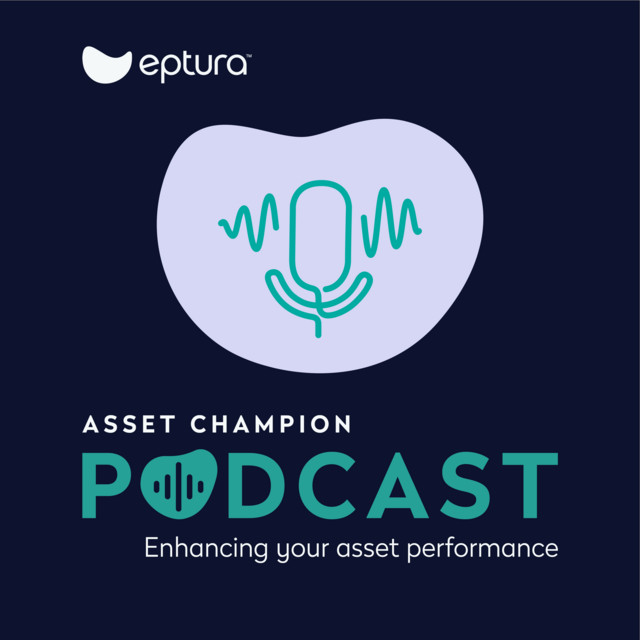
The goal of Earth Day is to celebrate the planet’s incredible environmental diversity while highlighting ways we can protect it for our future. Around the world, people are participating in Earth Day events, from planting trees to joining rallies to creating art to attending workshops on composting.
Earth Day is important because it reminds us that we should always protect the environment. For business leaders, that means finding ways to “make Earth Day every day” through a strategic combination of policies and technologies that help them set and meet their ESG (environmental, social, governance) goals.
Earth Day: a quick primer
Environmental awareness was on the rise throughout the 60s and early 70s, and activists wanted a way to start a national conversation about the problem of pollution and its possible solutions.
Although the original organizers hoped to stage educational sessions on college campuses, Earth Day soon expanded to include events across the country. The first year was a huge success, and the celebration has since expanded into a global event bringing together 1 billion people in over 193 countries. The day’s early and ongoing momentum likely put pressure on the government to do more to protect the environment, leading the U.S. Congress to pass the Clean Air Act and Clean Water Act, for example. Since 2020, Earth Day has shifted its focus from raising the alarm on pollution to fighting climate change.
At its core, Earth Day remains a way to celebrate the progress made by the environmental movement and help raise awareness of the need to protect the planet.
Why Earth Day matters for business
It’s only one day a year, but the message of Earth Day matters all year round. Everyone needs to help protect the planet. Asset- and facility-heavy companies have a large part to play because of their existing relationship with the environment, and their focus needs to be on how they can find and maximize efficiencies.
In her keynote on sustainability during a recent product launch, Meg Swanson, CMO at Eptura™ , explained: “Buildings account for 39% of global carbon emissions and we have a massive role in setting up the systems and processes to make sure that our built environments are on track to cut emissions.
We all have a corporate responsibility to both protect the environment and avoid financial penalties as well.”
Expanding government regulations on emissions
The number and severity of the possible penalties that companies face is growing. Swanson points out in her keynote that, “An estimated 20% of all buildings worldwide are at risk of being fined for not meeting emissions targets by 2030.”
For example, as of January 2024, all companies operating in the European Economic Area, which includes those based in the U.S., are subject to the new Corporate Sustainability Reporting Directive (CSRD) policy, requiring them to be much more detailed in their sustainability reporting.
The new CSRD regulation affects what companies must report on ESG performance, what data they must collect, and what processes they must implement. Factors include environmental, social, human rights, and governance. Companies must audit and disclose both the effect their activities have on the planet and the impact of these concerns on their business.
Meanwhile, building performance standards (BPS) are rising in many jurisdictions in America. In 2022, the federal government set up the National Building Performance Standards Coalition to help coordinate efforts to enact legislation between states and local governments.
Although the penalties vary according to the specific regulations, the motivation remains the same: Governments want building owners to invest in energy-efficient sustainability practices.
Increasing importance for employee engagement and satisfaction
Cutting emissions and reducing energy use helps organizations meet compliance requirements, but it has an added benefit of attracting and retaining top talent.
In fact, many job seekers now say an organization’s ESG goals and associated policies play an important role in how they choose where to work.
According to recent polling:
- 50% of employees won’t work for companies unless they show a strong commitment to social or environmental issues
- 75% say that opportunities to make a positive impact on social and environmental issues increases their sense of fulfillment
- 25% of employees said they’d look for a new job if their company had a history of environmental missteps
- 65% of employees say they’re more likely to work for a business is it has strong environmental policies
By embracing strong ESG policies, companies can help ensure their employees are engaged, productive, and stay with them over the long term. It’s more than just attracting talent, though. In 2022, 89% of investors said ESG was a factor in how and where they invest.
How to make every day Earth Day
Earth Day comes with many pieces of advice, but the best of all is to “Make every day Earth Day.” It makes sense to have a special day to remind us of how far we’ve come and how far we still have to go to protect our planet for future generations. But the only way for that to happen is if we all tackle the issues all the time.
For companies, that means implementing ESG initiatives and finding ways to follow through. Good intentions are not enough. Implementing sustainability initiatives requires a thoughtful and strategic approach.
And the best way to be thoughtful and strategic is with the right worktech. Ideally, you can leverage existing software solutions you’re already using to help you protect the planet.
With a unified platform for asset and facility management, companies can implement preventive maintenance for longer life cycles and leverage sensor data to cut energy use across their portfolios.
Implement preventive maintenance
Finding and fixing small issues before they become large problems is easier on the team. Knowing what you’ll be working on beforehand, so you have time to get all your tools and techs ready is simply less stressful. And preventive maintenance is easier on the budget, too. When you have lots of lead time to order in parts, you avoid costly rush deliveries, for example.
Most importantly for your ESG goals, preventive maintenance is easier on your assets and equipment. An oil change is a lot less invasive than having to swap out a piston. A properly maintained pump runs more smoothly, generates less heat for the HVAC to content with, and lasts longer.
Think of it this way: It took a lot of material and energy to design, manufacture, ship, and install your assets and equipment, so you need to get the best possible return on that carbon investment.
Leverage sensor data to track occupancy and utilization
With the arrival of the hybrid work model, companies can find themselves wasting electricity lighting, heating, and cooling empty spaces. It’s bad for the environment, and it’s bad for the bottom line.
By using sensor data to better capture occupancy data, companies can ensure they’re providing the best possible workplace experience for employees – but without any waste.
According to the latest Workplace Index from Eptura, employees’ desire to be with colleagues continues to dominate the drive behind in-office days. The proof: The mid-week mountain remains a constant, with most coming in during the middle of the workweek. Plus, when we asked people directly, “What are the main things you appreciate about going to the office (other workplace) to work?”, the two most important reasons were socializing with friends and collaborating with colleagues.
But the report also reveals that there’s variations across regions. Not every office is the same, so solutions need to be tailored. With the right sensors and software, facility and office managers can set the lights to go off or dim in empty areas. When someone arrives, the sensors detect them, and the system turns the lights back on. Instead of depending on national or regional trends, companies can save energy in real time, based on their specific situation.
Over the long-term, you can use that occupancy data do determine utilization rates, helping you right-size your square footage across a portfolio. In the end, you might find out that you need less space, or that you can rearrange your existing spaces to better meet employees’ needs.
And these are just two examples. By taking a multi-faceted approach, looking for efficiencies everywhere you can find them, you can build a complete program that cuts carbon emissions.
Earth Day is an important opportunity for companies to take stock of their current environmental practices and then recommit themselves to setting and achieving aggressive ESG goals. Everyone wants to protect the planet, but companies also need to be aware of how helping the environment helps them maintain compliance and retain top talent. As the regulatory climate becomes stricter and employees gain more mobility, your business sustainability will become even more tightly tied to your environmental efforts.
Because there are so many challenges, organizations need a multi-pronged approach. In facility- and asset-heavy industries, that means implementing solutions that help you capture reliable data so you can find long-lasting efficiencies that cut carbon emissions and costs.


